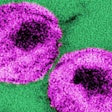Dear LabPulse.com member,
Diagnostic industry firms have a keen focus on introducing new tests, but they must simultaneously develop new systems to run those tests and provide differentiation from their competitors' products.
This past month, we've witnessed major announcements from two industry behemoths, Roche Diagnostics and Siemens Healthineers, describing systems they are seeking to implement.
The Roche system targets the molecular diagnostic testing segment of the IVD industry, while the Siemens Healthineers system simultaneously targets the clinical chemistry and immunoassay segments.
Molecular diagnostics
The most recent announcement came on Tuesday when Roche said it is officially launching its Digital LightCycler System, a polymerase chain reaction (PCR) system that enables researchers to accurately detect ultra-rare mutations in DNA or RNA samples. Roche added that the new system will be especially beneficial to those working in oncology and infectious disease who rely on early diagnosis to establish treatment plans and therapies.
During a presentation at AACR 2022 in April, Simran Saini, a principal scientist at Roche, described how the partitioning capabilities of the digital PCR system increases its sensitivity and ability to detect low abundance targets.
The Digital LightCycler System will be available in 2022 in 15 countries, with more countries to follow. It will be CE-marked and has U.S. Food and Drug Administration (FDA) 510(k) exempt status, Roche said.
Clinical chemistry and immunoassays
Meanwhile, Siemens Healthineers recently unveiled the Atellica CI 1900 Analyzer, a clinical chemistry and immunoassay testing system and lower-volume version of its on-the-market Atellica clinical chemistry and immunoassay testing solution. The analyzer is suitable for use as a standalone system in hub-and-spoke settings associated with integrated delivery networks.
Last month, at AACC 2022, the company said the system is in development and under review for potential clearance by the FDA.
Infectious disease testing
Over the years, developers have sought to commercialize more sensitive assays that can detect HIV sooner after infection. The latest HIV immunoassays are combo tests that detect HIV p25 antigen as well as HIV-1 and -2 antibodies. According to the latest issue of the In Vitro Diagnostics Business Outlook, published by Kalorama Information, the world market for HIV diagnostic testing has been increasing from less market activity due to the COVID-19 pandemic in 2020 and was worth about $2.597 billion in 2021.
Cancer diagnostics
A new study this week highlighted disparities in cervical cancer incidence and screening. Black women have a higher incidence of distant-stage cervical cancer compared with white women, according to research published in the International Journal of Gynecological Cancer. The researchers found that white women have lower rates of guideline screening and vaccination compared with Black women.
Meanwhile, the role of imaging has been increasing for pretherapy planning and response assessment in cervical cancer, but there's room for improvement, according to a review article published on Tuesday in the Journal of Computer Assisted Tomography (JCAT). The authors noted that liquid biopsy has emerged as a promising tool that may be able to overcome some of imaging's drawbacks.
With an eye on improving diagnosis for prostate cancer, researchers at the University of Essex have developed genetic-risk criteria and a subsequent score for patients with symptoms. According to the researchers, it could result in earlier diagnosis and reduce the need to perform invasive biopsy procedures for those who are at low risk.
Promising R&D
Investigators at the Columbia University Fertility Center and Columbia University Irving Medical Center, New York City, have led the development of a same-day, point-of-care test to identify abnormal fetal chromosomes. The group said that its test, completed at the point of care, may be particularly useful in identifying genetic causes of miscarriage and could be used to streamline in vitro fertilization. It also has the potential to eliminate the need to ship a sample to a clinical laboratory.
In a separate development with the potential to eliminate trips to the clinic for some patients, scientists have developed a prototype sensor that detects lithium levels from sweat on a fingertip in 30 seconds. The sensor has the potential to enable patients to take the right amount of lithium to alleviate the symptoms of bipolar disorder and depression, the scientists said in a presentation at the American Chemical Society (ACS) fall meeting on Sunday.



















